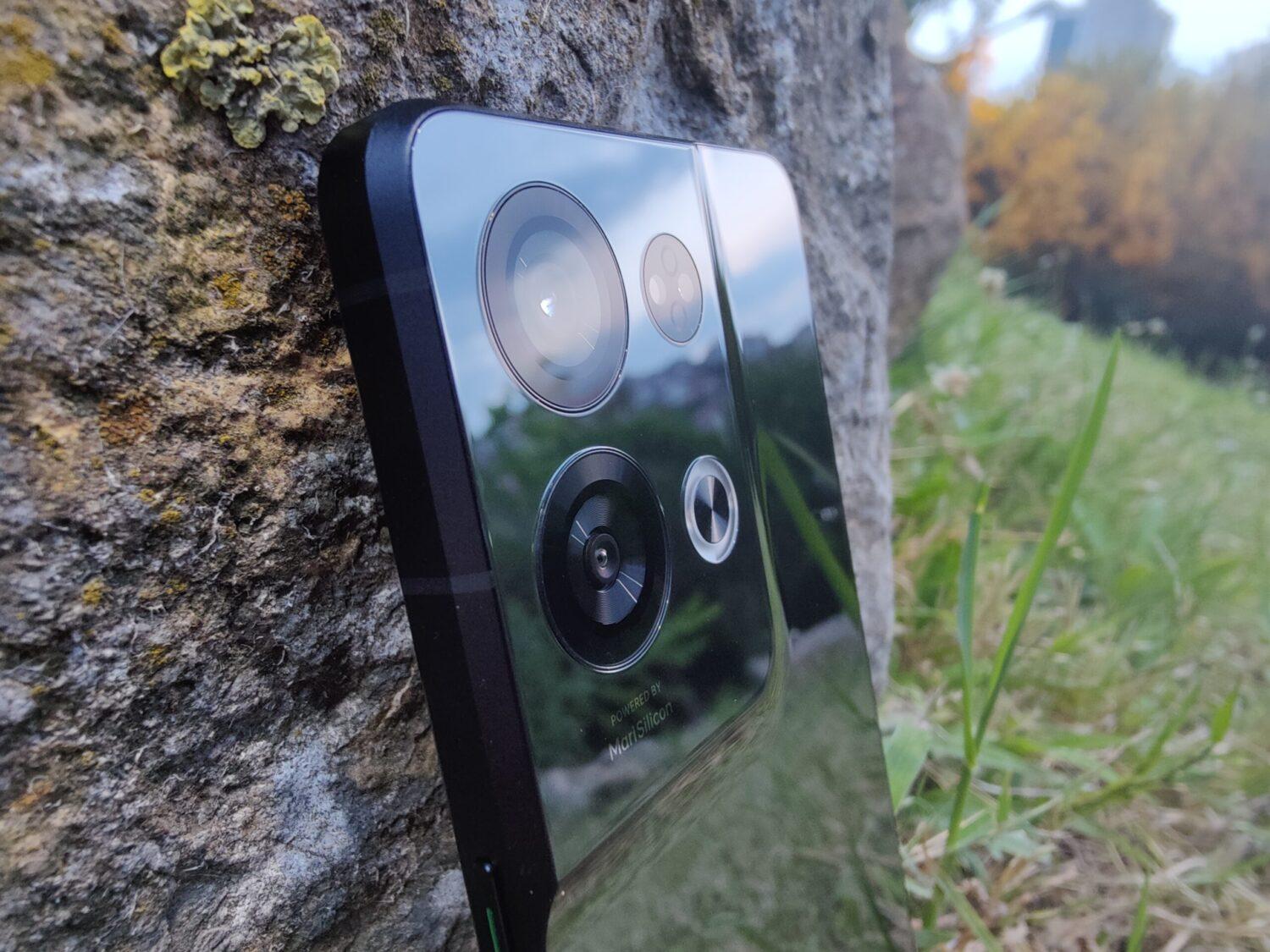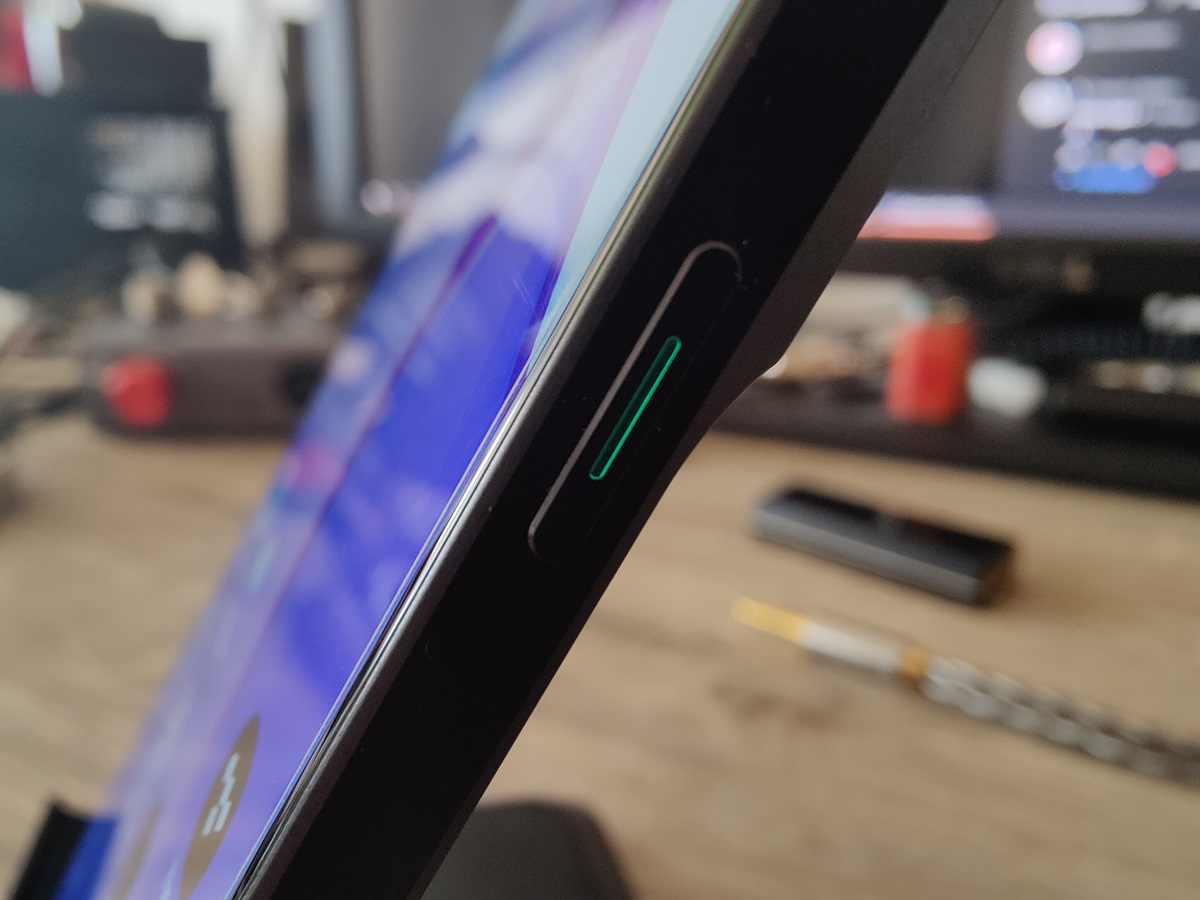OPPO Reno8 Pro 5G Review – Back to the Roots
Part 1
OPPO is the best mobile phone brand. That’s what I thought when I bought myself an OPPO Find 5 a decade ago. The design language and the specs were ahead of all of the competitor brands. Find 5 was the second mobile phone model with a 5″ screen full HD, also had a 13MP rear camera which also was one of the first in the business. Besides all these specs one more thing caught my attention big time and it was the ColorOS. I’m talking about the early days of Android, KitKat (Android 4) times. ColorOS was indeed so colorful compared to other Androids on other mobile phones. It had widgets that we didn’t see before, a theme store full of amazing free themes, etc. Altogether Find 5 was so tempting both in hardware and software and I was a big fan.

2 years later the world-famous Find 7 model came to the market. The Find 7 also shared the same internals as the first OnePlus One model, they were the same phones except for the outer shell and SD card support on Find 7’s. Again Find 7 came with unique specs like a 2K screen, 3GB of Ram, breathing notification light, and camera specs. I used both phones and I always installed ColorOS on OnePlus One. The “Live weather” widget on the new ColorOS was so amazing, that one spec kept me using ColorOS because it was so unique and I loved that kind of stuff, 3D moving objects on the entire home screen. It looked so futuristic to me.

When I first saw OPPO Reno8 Pro in photos I remembered those old days. I need to be honest and say that this model is the first one that got my attention in years from OPPO, alongside Find X5/Pro of course but Reno8 Pro being on the affordable side gets more attention from me. Not everyone has the opportunity to buy flagship models like in the old days. More on that later. Let’s jump to 2022 and start our Reno8 Pro review.
Disclaimer: I was chosen as one of the Ambassadors for this model by OPPO and I’m so honored and thankful for that. It’s like a dream come true for me to represent my favorite mobile phone brand. But rest assured, this will be an honest review no matter what.
What’s in the box
Specs
- Body: 161.2×74.2×7.3mm, 183g; aluminum frame, glass back.
- Display: 6.70″ AMOLED, 1B colors, 120Hz, HDR10+, 500 nits (typ), 800 nits (HBM), 950 nits (peak), 1080x2412px resolution, 20.1:9 aspect ratio, 394ppi.
- Chipset: MediaTek Dimensity 8100-Max (5 nm): Octa-core (4×2.85 GHz Cortex-A78 & 4×2.0 GHz Cortex-A55); Mali-G610 MC6.
- Memory: 256GB 8GB RAM, 256GB 12GB RAM; UFS 3.1.
- OS/Software: Android 12, ColorOS 12.1.
- Rear camera: Wide (main): 50 MP, f/1.8, 23mm, 1/1.56″, 1.0µm, multi-directional PDAF; Ultra wide angle: 8 MP, f/2.2, 16mm, 112-degree, 1/4.0″, 1.12µm; Macro: 2 MP, f/2.4.
- Front camera: 32 MP, f/2.4, 22mm (wide), 1/2.74″, 0.8µm, AF.
- Video capture: Rear camera: 4K@30fps, 1080p@30/60/120fps, gyro-EIS; Front camera: 1080p@30fps, gyro-EIS.
- Battery: 4500mAh; Fast charging 80W, 1-45% in 10 min, 1-100% in 31 min (advertised), Reverse charging.
- Misc: Fingerprint reader (under display, optical); NFC; stereo speakers. Bluetooth 5.3 and LE Audio support
We have two color options to choose from. This is the Glazed Black variant. Glazed Green is the second option that you can buy. Measuring 161.2 x 74.2 x 7.3 mm, the Reno 8 Pro is also surprisingly thin in person. It tips the scale at 183 grams, which is perfectly reasonable for a phone of its size. Reno 8 Pro feels and handles well in the hand.
The OPPO Reno 8 Pro both looks and feels premium in every aspect. The middle frame is made from aluminum. One note here, as you see the back glass has the unibody design, there is no camera bump, and the camera area is higher of course but it’s flat in that area. To achieve this OPPO adopted an 800℃ hot forging process and eight different nanometer-scale polishing processes for the back glass which looks and feels amazing, a flagship-level craftmanship. That kind of tech is also used in Find X3 and X5 but it looks better in Reno 8 Pro I think because it’s symmetrical with flat matt black sides.
The back glass surface is very slippery though and shiny like a mirror which makes it so hard to photoshoot if you don’t have a studio like me. I wish the back was some kind of matt glass like we see on some OnePlus models, would be amazing to complete Reno 8 Pro’s amazing design.

The front is protected with Gorilla Glass 5, while not the latest and greatest Corning has to offer but still good enough. There is a factory pre-applied screen protector on top of that which I always find a very important detail.
The Reno 8 Pro has a standard control set and layout. All three of its buttons are nice and big and easy to feel out, particularly the power button, with its little recessed bit and green color accent.
The top of the Reno 8 Pro is almost empty sand for two microphone holes. If we are counting correctly, that means that the mic array consists of three distinct microphones, which should help with overall audio capture quality for both calls and video recording.
Reno 8 Pro has its Type-C port at the bottom. It is wired for USB 2.0 data transfer, which tops out at a theoretical 480 Mbps maximum. There is USB Host functionality enabled. The Reno 8 Pro is a dual SIM (dual nano SIM) 5G device with SA/NSA support. For wireless, it has dual-band Wi-Fi 6/ax, as well as Bluetooth 5.3 with Bluetooth LE and aptX HD support. The Reno 8 Pro also has a dual-band GPS receiver with GLONASS, BDS, GALILEO, and QZSS support.
Display
Reno 8 Pro has a 93.4% screen-to-body ratio which is superb to look at. The 6.7″ AMOLED display with a resolution of 1080 x 2412 pixels is definitely one of the highlights of the Reno 8 Pro. That works out to a perfectly sharp density of around 394 PPI. It looks perfect in person. The AMOLED panel gets perfect blacks and hence technically infinite contrast. This particular panel gets quite bright too. OPPO advertises a peak brightness of 950 nits. More than plenty for a great all-around experience, especially outdoors in sunlight. The display on the Reno 8 Pro is also 10-bit, which means it can deliver 1 billion colors.

OPPO has its own optimization engine which is called the 01 Ultra Vision Engine and consists of two independent optimization modes. One is the Video Color Boost, which claims to intelligently identify common scenes in video and enhance their color and clarity. Then there is the Video Image Sharpener which does some on-the-fly upscaling, like 540p to 1080p.
Both modes are designed to work during video playback, not just within OPPO’s gallery and video player apps but also in third-party apps. OPPO explicitly mentions support for Instagram and YouTube. I gave them a try and could notice a difference, particularly from Video Color Boost, but the effect might not be universally appealing.
The OPPO Reno 8 Pro has the highest possible Widevine L1 certification, which lets streaming services like Netflix offer FullHD video to saturate its display resolution fully. There is also ample HDR decoding support, including HDR 10, HDR 10+, and HLG. Everything except for Dolby Vision. The Netflix app was more than happy to offer HDR and also recognized the forward-looking AV1 video decoder that the Reno 8 Pro has.
Battery
The OPPO Reno 8 Pro has a 4,500 mAh battery. It can charge at up to 80W peak with the SUPERVOOC charger and cable combo provided in the box. That’s a pretty big number and one that translates well into actual real-world charging rates. I managed to get the Reno 8 Pro from zero to 90% charge in just 30 minutes. A full charge took me precisely 42 minutes, which is indeed very fast.
Sadly there is no wireless charging on the Reno 8 Pro. I know there is common sense that non-flagship models don’t have this option but an exception would be very nice to complete the “flagship-level” specs of the Reno 8 Pro.

Performance
The Dimensity 8100-MAX SOC that the Reno 8 Pro comes with includes a 4x Cortex-A78@2.85 GHz and 4x Cortex-A55@2.0GHz CPU setup, a Mali-G610 MC6 GPU, a MediaTek Imagiq 780 ISP, and a MediaTek APU 580 AI processing unit, plus an LPDDR5 memory controller all packaged on a 5nm TSMC node. That’s just a hair more powerful than the Dimensity 8000 and generally positioned to be competitive with Qualcomm’s Snapdragon 888 and 888+. But in my tests, I saw that 8100-MAX can compete even with the latest flagship SOCs from Apple, Google and Qualcomm when it comes to AI benchmarks. Dimensity 8100-MAX has the 3rd best score after SD 8 Gen 1 and Dimensity 9000.

Back in 2021, MediaTek announced the Dimensity 5G Open Resource Architecture program, which basically allows manufacturers to custom tune and order Dimensity chips with alterations to certain bits, including things like connectivity and features and all the way up to CPU and GPU. Not many such custom chips have been created except Dimensity 8100-MAX with OPPO, altering the capabilities of the onboard MediaTek APU 580 in particular. These alterations promise better overall AI performance, better and more stable game framerates, and improvements to low-light video recording. This is the difference between Dimensity 8100 and Dimensity 8100-MAX SOCs.
The Dimensity 8100-MAX is a decent competitor to the Snapdragon 888, but mostly when it comes to multi-core or rather all-core loads where the four-by-four CPU arrangement with decently high clocks seems to be excelling. In single-core loads, the Dimensity 8100-MAX seems closer in points to a Snapdragon 870 5G instead. In any case, it’s a chip that holds its own well. This fact is also evidenced by the AnTuTu scores of the Reno 8 Pro.
Dimensity 8100-MAX chipset easily matches flagship performance from a generation ago with advanced chipset features like ISP capabilities and connectivity to match. As far as the “MAX” notation on the chipset goes, it denotes some extra custom capabilities apparently added to the NPU for improvements to general AI performance, game stability, and low-light video. For those gamers out there I should say that Reno 8 Pro is capable almost on the same level as flagship models so no worries there. 90Hz PUBG Mobile support is there too.
Cameras
The camera setup on the OPPO Reno 8 particularly focuses on the selfie experience and video capture, thanks to MariSilicon X imaging NPU (Neural processing unit). There is a 32MP, f/2.4 selfie camera on the front. It is based on the Sony IMX709 sensor (1/2.74″ size with 0.8 µm individual pixels). It’s a Quad-Bayer RGBW sensor complete with autofocus and DOL-HDR. This selfie camera is also used on the flagship model Find X5 Pro and on some previous Reno 7 series. The main 50MP, f/1.8 camera on the back uses the Sony IMX766 sensor. It is a 1/1.56″ sensor with all-pixel Omnidirectional phase detection autofocus. The Sony IMX766 sensor has been used in dozens of phones from mid-tiers to flagships. The 8MP, f/2.2 ultrawide camera uses the Sony IMX355 sensor. The Reno 8 Pro also has a 2MP, f/2.4 macro camera on the back.
About the MariSilicon X imaging NPU that we first saw on the Find X5 series flagship models this year. OPPO’s own custom chip is primarily in charge of video capture on the phone and is responsible for bringing 4K recording to it. MariSilicon X is a 6nm NPU chip with up to 18 TOPS of AI computing power that promises to deliver 8db of signal-to-noise reduction to 4K@30fps videos with up to 20 bits of dynamic range. As per OPPO’s press materials, MariSilicon X shines in particular in low-light and backlit portrait videos with up to 4 times higher image quality than 1080p and 42.9% better dynamic range thanks to HDR Fusion and AINR algorithms. It also does its work with 11.6 times better power efficiency than the last year’s Reno 7 Pro.
Part 1 Sum-Up
As ending the first part of my review you may have noticed that I didn’t talk about my once favorite Android operating system ColorOS. That’s because very soon, hopefully in September Reno 8 Pro will be updated to ColorOS 13 based on Android 13. For those who don’t know ColorOS 12 has won four design awards at the 2022 Red Dot Award. So I decided to write about the new OS and camera performance in Part 2 of my review, including my final conclusion about the OPPO Reno 8 Pro.
Part 2 Update
OPPO announced ColorOS 13 update for the Reno8 Pro 5G from September 2022. Normally you should expect it to come latest in October, right? Well at least I thought so, but the update came in 2023. I really wanted to be one of the first to review the new OS, but couldn’t. I wish OPPO would allow us to install updates locally (to download and install) as many other brands do.
Camera Performance
Reno8 Pro has two good cameras, the rear main and the selfie cams. Both can shoot very good photos in every condition, day and night.
The 8MP ultrawide camera, on the other hand, is just mediocre, takes okay photos in daylight that’s all. I think it does not suit the “Pro” model name. And the 2MP macro camera, really? In 2022? OPPO should have included a second good sensor for ultrawide which also supported macro mode and ditch the 2MP one. And the Reno8 Pro could be a dream phone for many including me. But I’m still using my OnePlus 9 as my daily driver.

















